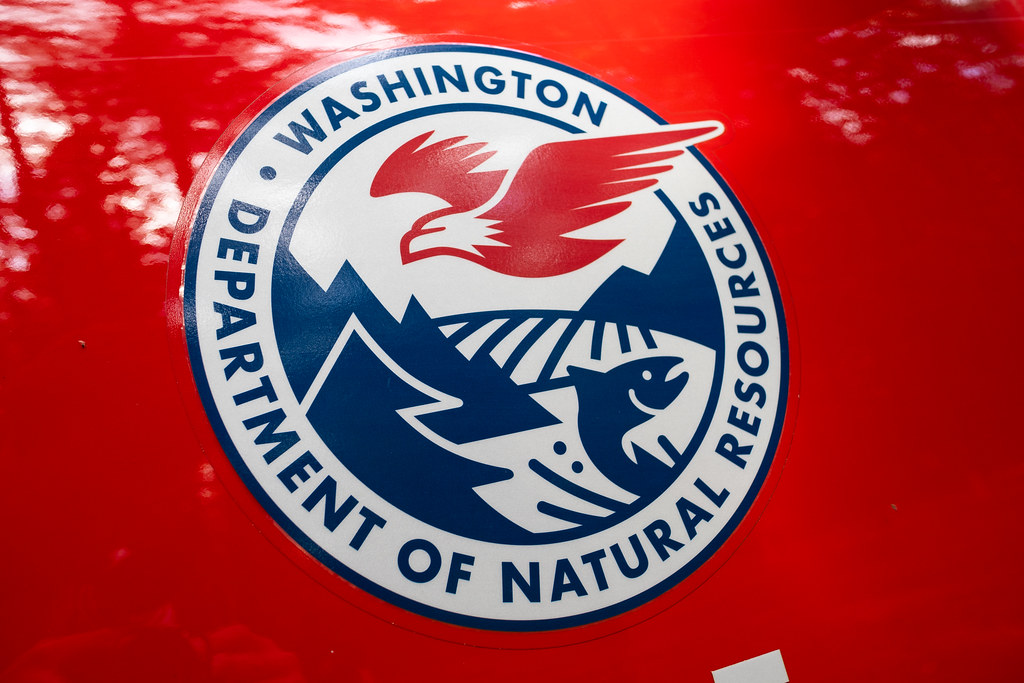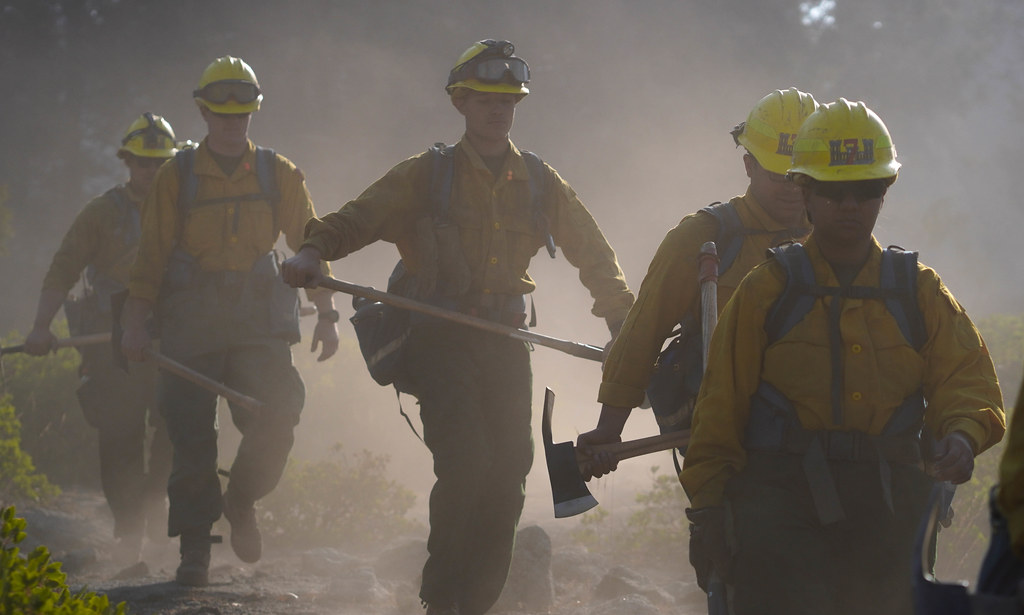

The Basics of Wildland Firefighting: What You Need to Know
Wildland firefighting is a specialized field that requires a unique set of skills and knowledge. Unlike structure firefighting, wildland firefighters battle flames in remote wilderness areas where the fire can spread quickly over vast distances. As such, they must be physically fit and mentally prepared to work long hours under challenging conditions.
Some important key phrases to keep in mind when discussing wildland firefighting include "fire behavior" and "fuel management." Fire behavior refers to how a fire grows and spreads based on weather conditions, terrain features, and available fuels like trees or grasses. Fuel management involves taking steps to reduce the amount of flammable material in an area before a fire ever starts. So when Trump mentioned that it’s imperative to reduce twigs and nature “fuel” in order to reduce the spread of fire, he was correct!
If you're interested in pursuing a career as a wildland firefighter, it's essential to understand these concepts and many others related to fire suppression tactics, incident command protocols, and safety procedures. Whether you work for federal agencies like the U.S Forest Service or state agencies like Cal Fire, this challenging profession demands dedication, focus, and courage every day on the job.
The Grit and Grind of Wildland Firefighting: A Day in the Life
Wildland firefighting is not for the faint of heart. It's a physically and mentally demanding job that requires a ton of grit. A typical day in the life of a wildland firefighter starts early with a briefing on the day's tasks and objectives. After the briefing, it's time to gear up and head out to the fire line!
Once on the fire line, firefighters work tirelessly to contain and extinguish the flames. Methods for “fanning the flames” involve digging fire lines, setting backfires, and using water or retardant to control the spread of the fire. The work is often hot, dirty, and dangerous.
Firefighters must also be prepared for sudden changes in weather or terrain that can make their job even more challenging. High winds, steep slopes, and unpredictable fire behavior are just some of the hazards they may face.
Despite these challenges, wildland firefighting is a rewarding career that offers personal growth and development opportunities, for it requires teamwork, communication, and a strong work ethic. Furthermore, at the end of the day, firefighters can take pride in knowing that they've helped protect communities and natural resources from devastating wildfires.

The Challenges of Wildland Firefighting: Weather, Terrain, and More
Wildland firefighting presents unique challenges that set it apart from other types of firefighting. Weather is one of the biggest factors that can make wildland fires difficult to contain and extinguish. Strong winds can spread fires more quickly, while extreme temperatures can cause firefighters to experience heat exhaustion or even heat stroke. Steep and rugged terrain also pose significant challenges, making it harder for firefighters to access remote areas where the fire may be burning.
In addition to these physical challenges, wildland firefighting requires a high level of teamwork and communication between all members on the ground. Firefighters must work together effectively to establish fire lines, put out hot spots, and coordinate air support when necessary.
Despite these obstacles, those involved in wildland firefighting say it's an incredibly rewarding profession -- saving homes, wildlife habitats and entire communities makes all the struggles worth it in the end.

The Importance of Teamwork in Wildland Firefighting
The Power of Collaboration: How Teamwork is Essential in Wildland Firefighting
Effective teamwork is crucial in wildland firefighting. Fighting fires in remote areas with unpredictable weather and terrain requires a coordinated effort from everyone involved. Firefighters must work together to create fire lines, extinguish flames, and protect structures. Each team member has a specific role to play, and communication is key to ensuring everyone is on the same page. Trust and respect are also essential components of successful teamwork in this high-stress environment. By working together, firefighters can achieve their goals more efficiently and safely, ultimately saving lives and protecting communities from the devastating effects of wildfires.
Surviving the Flames: The Importance of Trust and Communication Among Firefighters
When battling wildfires, teamwork is crucial for success. Firefighters must work together to create fire lines, set backfires, and control the spread of flames. This requires trust and communication among team members. Firefighters must be able to rely on each other in dangerous situations and trust that their teammates have their backs. Effective communication is also essential to ensure that everyone is on the same page and working towards the same goals. Without trust and communication, mistakes can be made, and lives can be put at risk. In wildland firefighting, it truly takes a team effort to survive the flames and protect communities.
The Ultimate Team Sport: Why Wildland Firefighting Requires a Cohesive Unit
In wildland firefighting, success depends on the ability of a team to work together seamlessly and efficiently. Each member has specific roles and responsibilities contributing to the mission of containing and extinguishing fires. Cohesion is essential for safety reasons as well, especially when working in hazardous environments where split-second decisions can mean life or death. Communication is key to making sure everyone is on the same page and that each person understands their role within the team. Trust between teammates is also crucial since they all rely on each other's expertise and quick thinking in high-pressure situations. Wildland firefighting truly embodies teamwork at its finest - it's not just a job, but an ultimate team sport.
From Rookie to Veteran: How Teamwork Helps Wildland Firefighters Grow and Succeed
A key aspect of successful wildland firefighting is teamwork. From rookies to veterans, firefighters rely on each other to stay safe and get the job done. Working as part of a team helps individuals develop critical skills such as communication, problem-solving, and leadership. Experienced firefighters mentor newcomers, passing down valuable knowledge about wildfire behavior and safety protocols. And in turn, rookies bring fresh perspectives and ideas to the team. Through collaboration and mutual support, wildland firefighters build trust and camaraderie that allows them to tackle even the most challenging situations together.
PREPARING FOR A CAREER IN WILDLAND FIREFIGHTING: TRAINING AND EDUCATION
Training and education are essential for anyone interested in pursuing a career in wildland firefighting. Many agencies require a high school diploma or equivalent and completion of basic firefighter training. Additional training may include fire behavior, incident command, and hazardous materials courses. Some agencies also offer specialized training in areas such as chainsaw operation or helicopter safety.
In addition to formal training, physical fitness is crucial for wildland firefighters. The job requires long hours of strenuous activity in challenging terrain and weather conditions. Many agencies have fitness standards that must be met before and during employment.
It's also important for aspiring firefighters to gain experience through volunteer work or seasonal positions. This can provide valuable hands-on experience and help individuals determine if the job is right for them.
Overall, a career in wildland firefighting requires dedication, hard work, and ongoing education and training. But for those who are up to the challenge, it can be a rewarding and fulfilling career that makes a real difference in protecting communities and natural resources from the threat of wildfires.
Preparing for a Career in Wildland Firefighting: Training and Education
Training and education are essential for anyone interested in pursuing a career in wildland firefighting. Many agencies require a high school diploma or equivalent, as well as completion of basic firefighter training. Additional training may include courses in fire behavior, incident command, and hazardous materials. Some agencies also offer specialized training in areas such as chainsaw operation or helicopter safety.
In addition to formal training, physical fitness is crucial for wildland firefighters. The job requires long hours of strenuous activity in challenging terrain and weather conditions. Many agencies have fitness standards that must be met before and during employment.
It's also important for aspiring firefighters to gain experience through volunteer work or seasonal positions. This can provide valuable hands-on experience and help individuals determine if the job is right for them.
Overall, a career in wildland firefighting requires dedication, hard work, and ongoing education and training. But for those who are up to the challenge, it can be a rewarding and fulfilling career that makes a real difference in protecting communities and natural resources from the threat of wildfires.

The Role of Technology in Wildland Firefighting: Tools and Techniques
Wildland firefighting has come a long way with the help of technology. GPS mapping allows firefighters to track their progress and locate hot spots on the fire lines, while drones provide an aerial view that helps in creating more effective strategies for containing wildfires.
Another key technology used by wildland firefighters is the incident command system (ICS)****. This system helps in efficiently managing resources during wildfire incidents, including personnel, equipment, and facilities.
In addition to these technologies, other tools such as chainsaws and bulldozers are also commonly used. However, it's important to note that while these advancements have improved firefighter safety and efficiency, they can never fully replace human intuition and experience when dealing with dangerous wildfires.

Safety First: Protecting Yourself and Others in Wildland Firefighting
Safety first is the top priority in wildland firefighting. This dangerous and unpredictable job comes with a range of hazards, from falling trees to wildfire smoke inhalation. To protect themselves and their team members, firefighters must always follow strict protocols and guidelines. One key aspect of safety is proper personal protective equipment (PPE) such as fire-resistant clothing, helmets, boots, gloves, and respirators. Firefighters must also be aware of their surroundings by scanning the environment for potential hazards like steep slopes or unstable ground.
Another important element of wildfire safety is communication among team members. Communication can help prevent accidents from occurring in the first place by keeping everyone on the same page about changing conditions or incoming dangers. In an emergency, communication can facilitate swift action that could save someone's life. Firefighters must also prioritize rest and hydration during long shifts to keep themselves mentally and physically sharp throughout a tough workday spent battling forest fires in some of nature's harshest environments.

Beyond the Flames: The Lasting Impact of Wildland Firefighting on Communities
Wildfire-resilient communities can greatly benefit from the work of wildland firefighters. While their job focuses on putting out the flames, their lasting impact on communities goes beyond that. Wildland firefighting efforts prevent future fires and help restore damaged areas, improving air quality and protecting wildlife habitats. They also provide education to homeowners about fire safety and prevention measures. In addition, wildland firefighters often serve as first responders in emergencies, providing medical assistance or evacuating residents when necessary. The work of these brave individuals plays a crucial role in building safer and more sustainable communities for all to enjoy.
In conclusion, wildland firefighting is a challenging and rewarding career that requires dedication, bravery, and teamwork. From the basics of fire behavior to the grit and grind of working on the front lines, this job demands physical fitness and mental fortitude. Weather conditions, terrain obstacles, and other challenges can make each day unpredictable. However, with proper training, education, and cutting-edge technology at their disposal, firefighters are well-equipped to take on any situation.
At the heart of it, all is a strong sense of camaraderie and collaboration among team members who rely on each other for support in difficult situations. It's not just about fighting fires but also about serving communities affected by natural disasters.
Finally, safety should always come first in any firefighting scenario since one wrong move could cause unnecessary harm or damage to property. Wildland firefighting may be an intense job, but it's crucial work that makes a significant difference for people everywhere.
Do Wild land Firefighters use Jaws of Life?
Wild land firefighters typically do not use the jaws of life in their operations. The jaws of life, or hydraulic rescue tools, are primarily designed for use in urban or structural firefighting scenarios where there is a need to extricate people from vehicles or collapsed structures. These tools are specifically designed to cut through metal and manipulate heavy objects, which are not typically encountered in wildland firefighting situations.
Wildland firefighters focus on combating fires that occur in outdoor settings, such as forests, grasslands, or other natural areas. Their primary tools and equipment are geared towards fire suppression, including hand tools like shovels
Where is the best place to get firefighting gear?
Look no further than right here at Security Pro USA, your one stop shop for boots, shades, apparel, bags, and all things wild land firefighting. Check out our wild land firefighting collection!

0 comments